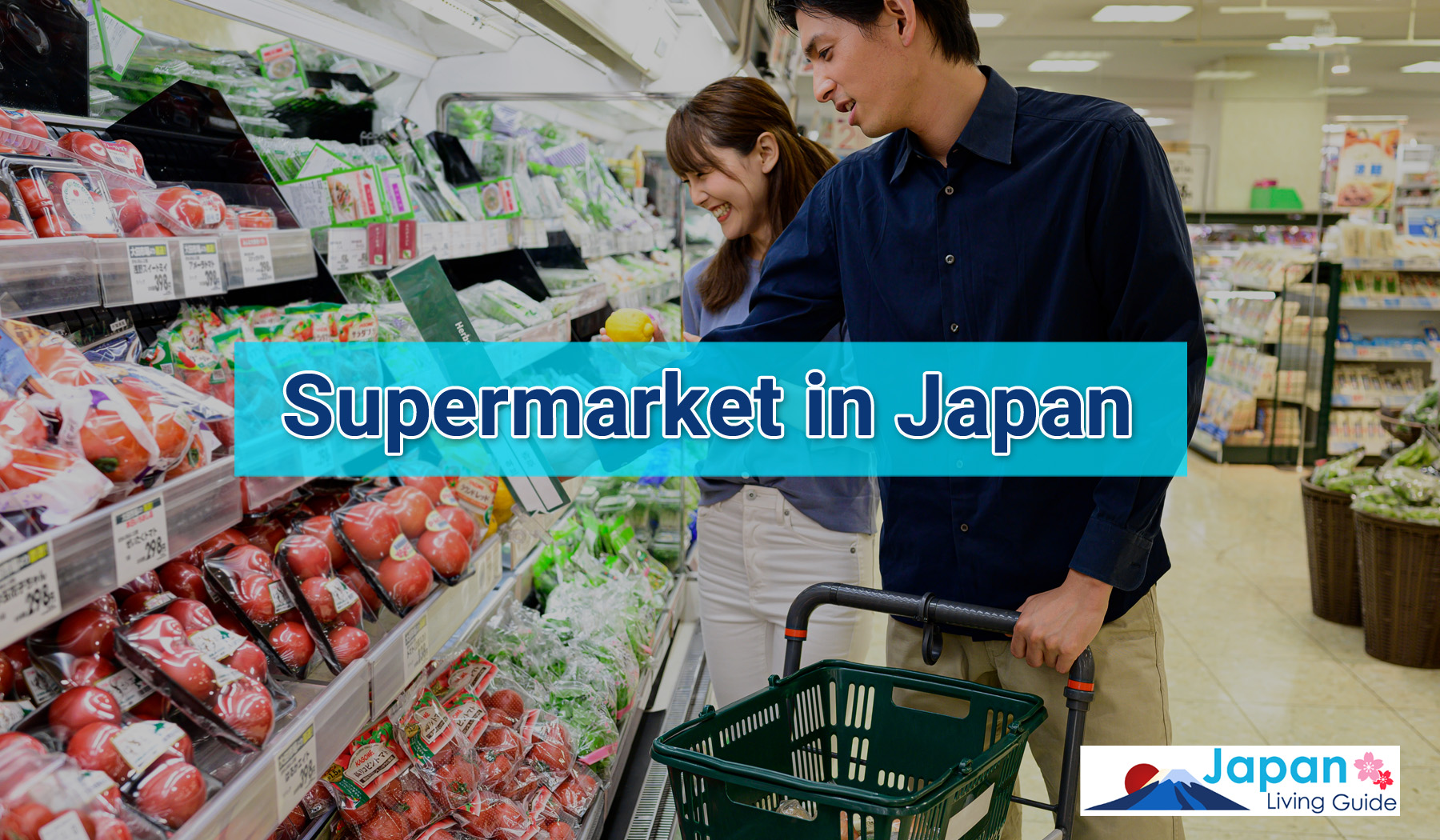Get the Most Out of Shopping at a Supermarket in Japan

Grocery shopping is part of daily life for many of us making it important to familiarize yourself with local supermarkets when moving to a new country such as Japan. Supermarkets in Japan share many similarities with those in other countries, but there are a number of interesting characteristics that set them apart. Keep reading to learn about supermarkets in Japan and what to expect when stepping into the one as well as how to save money when doing grocery shopping.
In Japan, you can also easily purchase groceries online: "Online Grocery Shopping in Japan: Great Food Stores". You can also purchase foods in the basement floor of department stores known as "depachika". For a list of depachika in Tokyo, please check this article. If you have difficulty understanding Japanese food labels when doing grocery shopping, you may find the following articles useful: "How to Read Japanese Nutrition Labels", "Sugar-Free Diet in Japan: Understanding Food Labels", "Reading food expiration dates in Japan".
Supermarkets in Japan

In Japan, there are many supermarket chains such as OK Store, AEON, Gyomu Super, Life, Seiyu, etc. Some supermarket chains such as Gyomu Super have locations throughout Japan, while others are concentrated in specific areas such as OK Store which has many supermarkets in Kanto area. In Japan, there are numerous other supermarket chains as well as local supermarkets that may vary depending on the area.
However, if you would like to purchase groceries imported from other countries, it can be recommended to explore international supermarkets. Some of the most popular supermarket chains in Japan that have various foods from overseas are Seijo Ishii, Kaldi Coffee Farm, Costco, Meidi-ya. For a list of international supermarkets in Tokyo, please check this article.
Japanese Supermarkets vs. Overseas Supermarkets

While this does not cover all of the differences between Japanese supermarkets and what you might encounter in your home country, these are several of the more noticeable ones.
Shopping Carts
As with supermarkets around the world. Handheld baskets are offered at supermarkets in Japan. What might be different than what you are used to is that those baskets are also used as shopping carts.
Instead of large carts, as you would see at Costco or in the United States, the shopping carts in Japan are much smaller and are designed to hold a basket on the top and bottom. So, if you are using a cart, you also need to pick up a basket, which should be located nearby.
Weight vs. Quantity

Depending on your home country, you might be used to certain items being sold by weight. In Japanese supermarkets, this usually not be the case, especially with produce, as all fruits and vegetables are typically pre-packaged with a fixed price. Depending on the supermarket, meat and fish also might be sold this way. If you have difficulty understanding Japanese words for various meat, please check "50+ Ways to Say Meat in Japanese: Beef, Pork, Chicken & More". The following article will help you read Japanese seafood labels: "Pick the right fish for your dish - How to read seafood labels in Japan".
Ready-made Food
While many supermarkets around the word may offer some ready-made foods such as sandwiches, you can find so much more in Japanese supermarkets. Many supermarkets in Japan have a selection of onigiri, sushi, croquettes, yakitori, as well as other ready-made meals with rice, meat, fish, and other ingredients. Overall, supermarkets in Japan with their great selection of ready-to-eat Japanese food are great if you do not feel like cooking.
Checkout Process

When it comes time to pay, you do not need to remove your groceries from the basket in Japanese supermarkets; simply place the basket on the checkout counter and the cashier will unload them.
There are three main types of checkout systems being used in Japan. You are likely to see all three in major cities in Japan.
・Full-service checkout
This is the traditional checkout system with a cashier scanning your groceries and taking your payment.
・Semi self-checkout
With this type of checkout, the cashier will scan your groceries as usual but will then direct you to a payment machine nearby to complete the transaction.
・Self-checkout
With this setup, you scan and pay for your groceries yourself. While some supermarkets will let any customer use these machines, others require that you sign up and use a specific card.
Disposable Plastic Bags
The general consensus is that plastic bags are damaging to the environment, and many countries are in different stages of eliminating them as a bagging option. Currently, Japan does not ban their use, instead requiring stores to charge a fee for any customer that wants one. Most supermarkets offer a variety of sizes at the register and will charge a nominal fee of ¥1 to ¥5, depending on the size of the bag. To learn about Japanese currency, please check this article.
It is common to see customers carrying reusable “eco” bags or simply requesting that a sticker be placed over the barcode to indicate that the product has been purchased.
Also, depending on the supermarket in Japan, you either have to request a plastic bag, at which point you will be charged for one, or you have to request not to have a plastic bag. In the latter case, there will typically be a card at the cash register that you hand the cashier that says you do not want a plastic bag.
Bagging Your Groceries
After paying for you groceries, you may expect the cashier or another employee to bag them, however, this is not the case in Japanese supermarkets.
In most supermarkets there will be a separate bagging area next to the checkout area for you to bag your own groceries. After paying, you can take your basket to the bagging counter, or the cashier will help you if they notice you might need assistance (such as for the elderly, pregnant women, etc.). There are some exceptions to this practice, and the cashier may occasionally bag your items if its just a few things and no one is waiting in line behind you, but in general, self-bagging is expected.
Payment Options in Japanese Supermarkets

Most supermarkets in Japan now offer a variety of payment options, especially the larger chains and ones located in major cities. These options usually include cash, credit card, IC cards, point cards, and various “cashless” phone apps (e.g., PayPay, Rakuten Pay, etc). However, it is always a good idea to have cash on you in case you end up in a supermarket that does not accept your preferred form of payment.
Read More: Electronic Money (E-Money) in Japan
Supermarket Point Cards
As we mentioned above, many supermarkets, especially chain supermarkets, typically have a point card system. If you tend to shop at a particular supermarket location or chain, it is worth taking a few minutes to register for one at the service counter. With a point card, you will be able to accumulate enough points over time to use instead of cash. Supermarkets tend to give you these points in different ways; with some, you must request to use the points while checking out, while others will automatically print off a coupon from time to time that must be scanned to redeem.
The most popular point cards that can be used at various stores include V-Point, Ponta, Rakuten Point, etc. Some supermarkets in Japan also have their own exclusive point cards.
Discounts and Coupons
If you would like to get the best deals on your groceries, you will find major discounts on produce, dairy, bread, meat and fish, as well as prepared foods just before the supermarket closes. This is a common practice in Japan to prevent food waste. Usually, the amount of discount for prepared foods increases as the closing time approaches. The maximum amount of discount varies depending on the supermarket, food, etc., but it is often up to 50 percent. The downside of shopping at such time is that the selection can be minimal.
Some supermarkets will also have a special cart or table that has discounted produce or other products that are close to expiration or are being discontinued. For information on supermarkets in Japan that sell expired (expiring) food, please check this article. To learn about expirations dates, please check "Reading food expiration dates in Japan".
Finally, many supermarkets have their own fliers or apps that announce the week’s new products, sales, and more.
Shopping at Supermarkets in Japan is Easy
While there are likely differences between supermarkets in Japan and what you are used to in your home country, they are mostly cultural and are easy to adopt into your daily lifestyle. We hope this article will help make you comfortable when stepping into Japanese supermarket, and give you some ideas on how to save money when buying groceries.
If you would like to cook Japanese food and not sure where to look for recipes, please check "Free English Websites for Japanese Food Recipes". For more information on daily life in Japan, check out our comprehensive articles covering paying bills, buying laundry detergent, SIM card, and much more!
















